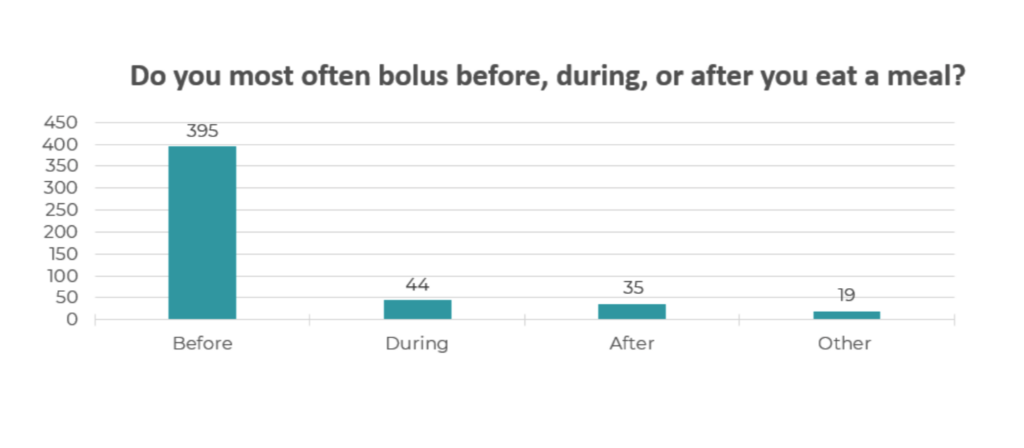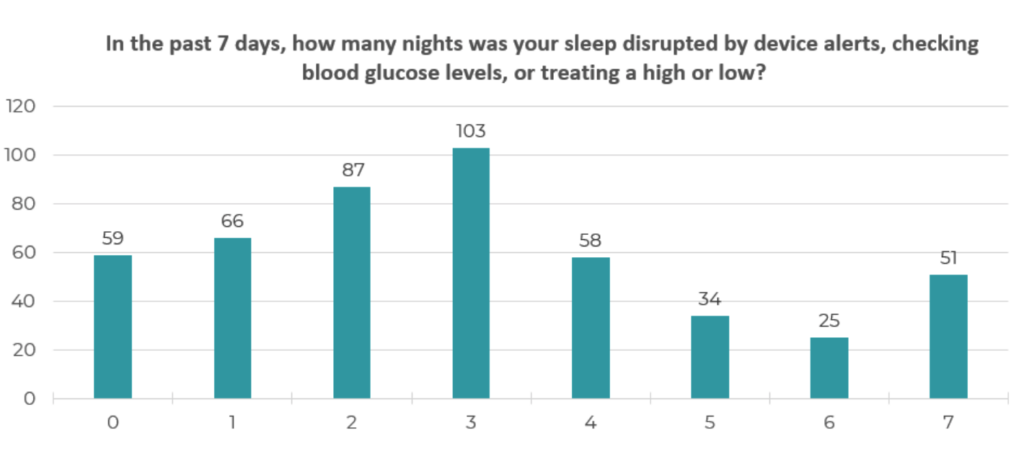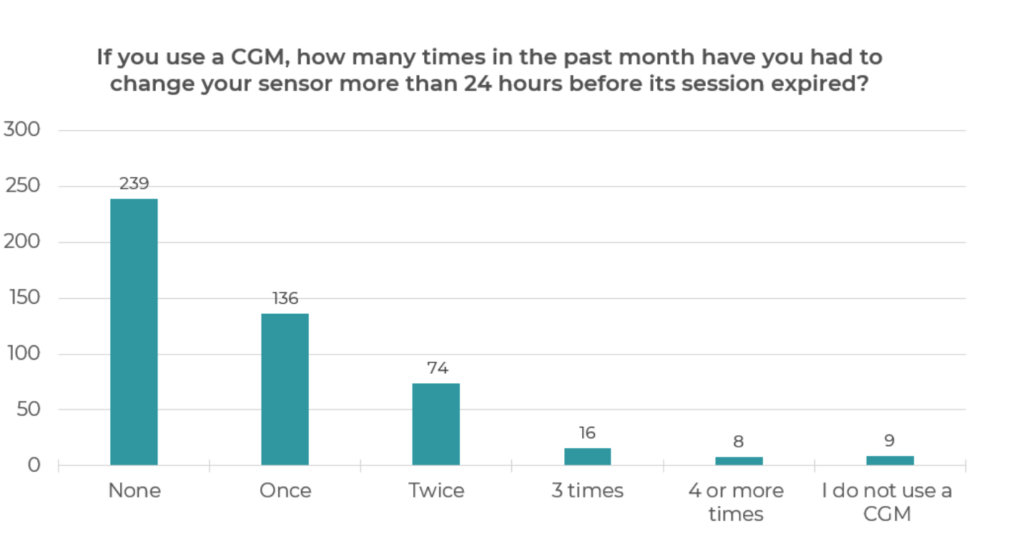
Sign up for a new account.
And get access to
The latest T1D content
Research that matters
Our daily questions
Sign up by entering your info below.
Reset Your Password
Don't worry.
We will email you instructions to reset your
password.
What We Learned From the Online Community This Month
Thank you to every member of the T1D Exchange Online Community for inspiring others who come to this community for advice. Through your answers to our Question of the Day, we learn more about the challenges of living with T1D and what types of support you still need. Here is what we learned from the three most popular questions of July 2022!
 1. Do you most often bolus before, during, or after you eat a meal?
1. Do you most often bolus before, during, or after you eat a meal?
Our most popular question this month received 495 responses and 49 comments from our Online Community members! The majority—80%—of respondents who answered the question shared that they bolus for a meal before they eat. On the opposite end, 7% of respondents shared that they bolus for a meal after they eat, and 9% shared that they bolus during a meal.
Comments from community members revealed that the surrounding cirumstances often influence the timing of a meal bolus—including pre-meal blood glucose levels, type or length of meal, dining at home vs. a restaurant, and the timing of an exercise session that day. Several community members shared that they sometimes forget to do it before eating but always try their best to at least do so before finishing the meal.
Here are some comments that resonated with the community:
- “ALWAYS before. My bolus doesn’t kick in for 2-3 hours, so.”
- “I try to pre-bolus about thirty minutes before I eat, unless I’m in a lower range.”
- “Before if I am at home and glucose is normal or elevated. If I am eating out, I wait until the food arrives.”
- “Pre-bolusing is key to postprandial glucose control! When I was diagnosed in the era of R and NPH [insulins], I was taught to pre-bolus and find it still necessary with a pump and Humalog, although not as far in advance.”
- “That REALLY depends on what my blood glucose level is prior to eating. I have gastroparesis… delayed emptying of stomach contents…which often results in my suffering a hypoglycemic [hypoglycemic, for my American cousins] event should I infuse insulin prior to eating.”
- “I try 15 min before meals, per my endo advice. Hard to do most of the time.”
 2. In the past 7 days, how many nights was your sleep disrupted by device alerts, checking blood glucose levels, or treating a high or low?
2. In the past 7 days, how many nights was your sleep disrupted by device alerts, checking blood glucose levels, or treating a high or low?
Our second most popular question in July received 485 participant responses. Sleeping while managing T1D can be very challenging and stressful. 88% of respondents shared that their T1D affected at least one night of sleep in the past week. Only 12% of respondents chose that their T1D had no effect on their sleep . Although each week can vary, T1D inevitably affects most people’s ability to sleep soundly every night. Several community members shared that it feels like T1D disrupts their sleep schedule on a nightly basis—and that it is simply part of living with diabetes. One member was celebrating the fact that diabetes had only disrupted her sleep once in the past week.
Here’s what some community members shared about their sleep schedule:
- “7 for me…t is just part of life for a LONG time now…so not a bother.”
- “Don’t know why there are so many alerts for highs when I already know I am high.”
- “I much prefer being awakened by the alert rather than by that fireman’s voice, “Well, he’s back!””
- “I started using Omnipod 5 about two months ago. I don’t get alerts while sleeping anymore. I wish the cats were as cooperative.”
 3. If you use a CGM, how many times in the past month have you had to change your sensor more than 24 hours before its session expired?
3. If you use a CGM, how many times in the past month have you had to change your sensor more than 24 hours before its session expired?
Our third most popular question this month looked at the lifespan of CGM sensors . Nearly half shared that they do not have to change their sensors before the session expires—getting the expected number of days from their CGM technology. 28%, of respondents, shared that they’ve changed their sensor at least once in the past month before the session expired. Within the comments of this question, the online community shared more specifics about getting the most from their CGM technology.
Here are some of the comments with the highest engagement from the community:
- “Things continue to work pretty well. I find that the main complaint I have is how much anxiety there seems to be concerning getting supplies on time, and not getting the full ten days with a sensor. Worry wart, yes, but I think it’s the price we pay to be relying on technology instead of pancreases! Glad to be alive!”
- “However, recently I’ve noticed diminishing connectivity on days eight, nine and ten. Relatively new phenomenon. Interested in others’ experience with Dexcom 6 specifically.”
- “I’ve been having trouble with the Libre 2 sensors. Lately they run low. Often 30-40 [points] lower than fingersticks.”
- “Not only do I rarely change my G6 sensor before the 10 days, I usually wear them 15 days thanks to my Anubis transmitter.”
- “I rarely get the full 10 days. I said three because I changed every sensor this month early. But, technically, it was four but the 4th one was due to a transmitter issue and likely ‘user error’.
- “I think it’s because I bleed a lot…I’ve tried everything under the sun to get them to last longer, but nothing seems to work for me so that’s why I think it’s a bleeding issue.”
We learn something new everyday thanks to the many responses we receive to our Question of the Day. Thank you for sharing your experiences and wisdom with us!
If you are not already a member of the T1D Exchange Online Community, join us by clicking the “Join” button at the top of this page.








1 Comment